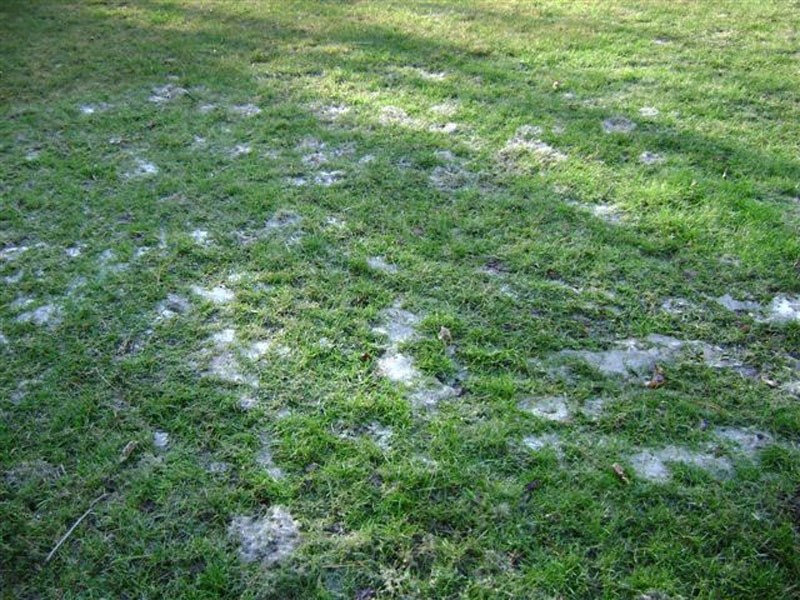The recent warm temperatures provided the perfect conditions for melting snow on lawns and driveways.
But hiding beneath larger piles of snow is a less than welcome sign of spring – a fungus called snow mould.
Spores from the mould can cause sneezing, wheezing, itchy eyes and, in more severe cases, trouble breathing. Spores are the reproductive cells of the mould.
“It’s something that comes around every year. It likes the cold, it thrives in the zero-to-seven-degrees temperature range and it likes environments where there is plenty of organic material,” said Chris Sikora, medical officer of health for Alberta Health Services.
“The trick is to get the snow to melt quickly. As soon as the snow is exposed to good temperatures, the mould doesn’t survive.”
Snow mould spores are not in the snow but grow in the moist soil underneath. Once the snow melts, the mould leaves circular grey or pink patches of unhealthy looking grass.
But by that point, the spores have escaped into the air.
Sikora said the best way to prevent snow mould is to spread snowdrifts out instead of leaving them piled up.
“Mould is a fungus. It likes organic materials so this is the reason why trying not to fertilize after, say, July or August can help,” he said.
“That reduces the amount of organic material present in the lawn that the mould can grow on.”
He added that not mulching the lawn in the fall, cutting the grass short and getting rid of damp leaves also helps to prevent snow mould.
Beth Nanni with the Alberta and NWT Lung Association added the mould stops growing once temperatures reach five to 10 degrees or when the soil surface dries up.
If people find their yard infected by snow mould, she advises to rake the affected patches gently to loosen up matted areas and promote drying.
People should wear masks while raking, as loosening the mould up may cause them to inhale it.
Even when not allergic to snow mould, people should keep their house and yard clean and mould free.
Warren Kindzierski, associate professor for environmental health sciences at the University of Alberta, said snow mould is only one of about 100,000 spores that grow under the snow.
“Fungal spores are a general risk factor for hypersensitivity diseases and because there are so many types it becomes challenging to find the smoking gun,” he said.
“Snow moulds are prevalent in the spring with receding snow. They dissipate rapidly and then all the other spores take over with the actively growing vegetation.”
For those suffering from severe allergic reactions, Sikora advises to see a doctor right away. Everyone else should manage it as part of the general allergy season, and limit their exposure when possible.




